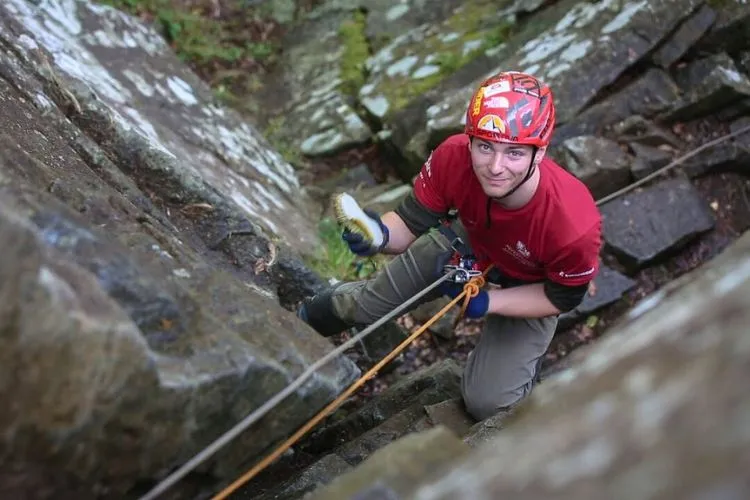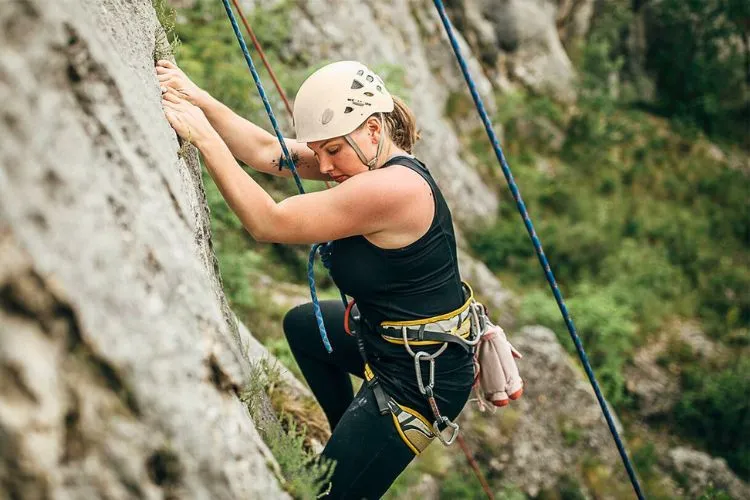Rock climbing is an exhilarating sport that challenges both the body and mind, drawing enthusiasts to scale natural rock faces and indoor climbing walls alike.
However, the unpredictability of weather can pose a significant question for climbers: Can you rock climb in the rain?

This article explores the feasibility of climbing in wet conditions, the potential risks involved, and tips for those who find themselves caught by rain mid-climb or are considering braving the elements.
can you rock climb in the rain?
Rock climbing in the rain is generally not recommended. Rain can make rock surfaces slippery, increasing the risk of slipping and falling. Additionally, wet conditions can weaken certain types of rock, such as sandstone, making them more susceptible to damage from climbing.
It’s important for climbers to consider the safety implications of wet weather and the potential for harming the natural environment. However, climbing in light rain may be possible on certain types of rock, like granite, which can maintain some grip when wet.
Climbers should use their judgment, prioritize safety, and assess the impact on the rock and the environment before deciding to climb in rainy conditions. Indoor climbing gyms offer a safe alternative for climbing when outdoor conditions are unfavorable.
Understanding the Risks
Climbing in the rain is not outright impossible, but it comes with increased risks and challenges that climbers must be aware of. The primary concern is safety. Wet conditions significantly affect the rock’s texture, making it slippery and reducing friction.
This decrease in grip can make holds more difficult to secure and footing less stable, increasing the likelihood of slips and falls.

Impact on Equipment
Rain also impacts climbing equipment. For instance, ropes absorb water, becoming heavier and less flexible, which can affect their handling and performance during climbs. Metal gear, such as quickdraws and carabiners, can be more prone to corrosion if frequently exposed to water, potentially compromising their integrity over time.
Environmental Considerations
Climbing on wet rock, especially sandstone, can cause irreversible damage to the rock face. Wet sandstone becomes soft and fragile, and climbing on it can lead to the breaking off of holds and erosion of the rock, negatively impacting the climbing environment for future generations.
When Climbing in the Rain Might Be Feasible?
Despite these risks, there are circumstances under which climbing in the rain can be feasible, albeit with caution and preparation. Climbing routes that are overhung may offer some protection from the rain, keeping the rock surface and holds relatively dry.
Additionally, certain rock types, like granite, maintain better friction when wet compared to others, such as limestone or sandstone, making them somewhat safer options during light rain.
Safety Tips for Climbing in Wet Conditions
For climbers who decide to venture out in wet conditions or are caught by unexpected rain, here are some tips to enhance safety:

- Assess the Route: Choose routes that are less affected by rain, such as those with overhangs, and avoid climbing on fragile rock types like sandstone in wet conditions.
- Check Your Gear: Ensure all equipment is in good condition and suitable for wet weather. Consider waterproofing items where possible and be prepared to manage heavier, wet ropes.
- Climb Carefully: Adjust your climbing technique to account for reduced grip and stability. Move slowly and deliberately, testing holds before committing your weight.
- Plan for Quick Retreats: Be prepared to abort your climb if conditions worsen. This means being familiar with your route and having a plan for descending safely in wet conditions.
- Dry and Maintain Equipment Post-Climb: Properly drying and maintaining your gear after climbing in the rain is crucial to prevent damage and ensure its longevity.
Alternatives to Outdoor Climbing in the Rain
On days when outdoor climbing is not safe or feasible due to rain, consider alternative activities that can help you stay in shape and improve your climbing skills:
- Indoor Climbing Gyms: Use the time to work on technique, strength, and endurance in a controlled environment.
- Climbing Workshops and Training: Participate in workshops that focus on skill development, such as rope handling, lead climbing, and climbing safety.
- Cross-Training: Engage in other forms of exercise that complement climbing, such as yoga for flexibility, or strength training focusing on the core and upper body.
- Planning and Research: Use the time to plan future climbs, research new climbing areas, and study route guides.
Conclusion:
While rock climbing in the rain is not entirely off-limits, it requires careful consideration of the risks involved and a strong emphasis on safety. Climbers must weigh the potential dangers against their experience and skill level, always erring on the side of caution.
On wet days, exploring alternatives like indoor climbing or focusing on training and planning for future climbs can be equally rewarding, ensuring climbers stay engaged and continue to develop their skills, regardless of the weather.


